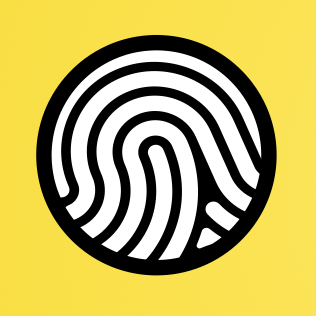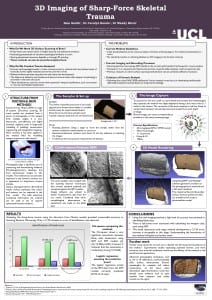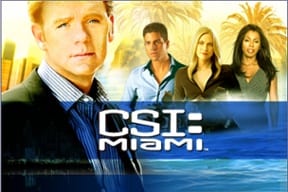ANZFSS 23rd International Symposium on the Forensic Sciences
By uctzmaa, on 5 September 2016
The CFS group is officially in countdown mode with only 13 days to go until the Australian and New Zealand Forensic Science Society (ANZFSS) 23rd International Symposium on the Forensic Sciences (http://www.conference.co.nz/anzfss16) being held in Auckland, New Zealand. This year, 17 of us (2 staff and 15 researchers) are delivering 6 keynote presentations, 13 presentations and 2 posters. We are excited to share our research with the wider forensic community and honoured that all the work we have done is being recognised. Stay tuned for updates about the conference as it happens.
“Mission Decipher”: Public Engagement in the Forensic Sciences
By Sian E Smith, on 21 July 2016
Last month I was lucky enough to work with a school from Birmingham, the Selly Oak Trust School on behalf of Forensic Outreach. We spent an hour and a half together learning a bit about the history of cryptography and then on to solving mysteries! They made their own enigma machines, translated coded World War II messages, and reconstructed shredded documents. We definitely had some budding cryptanalysts that day – they solved the mysteries with flying colours!
But why is science outreach and public engagement so important?
In the early 19th Century, public lectures lead to the popularisation of science. Nowadays, scientific fields, like forensic science and forensic anthropology, are popular storylines for TV shows. This is great because it opens people’s minds to the opportunities and fascinating technologies that we use. But perhaps…they are slightly exaggerated sometimes. Sadly, our days aren’t filled with witty one liners, steely stares, and dramatically removing our sunglasses (as fun as that would be).
These shows do a great job at demonstrating the real-world applications of the forensic sciences: using bones to identify who someone was and how they died, or using DNA to solve a sexual assault case for example. Science needs to be more integrated into our culture and media is a great way to do it.
Public engagement, or outreach, are great for both the audience and the researchers. Research Councils UK emphasise that engaging with a non-specialist audience can greatly improve your communication skills; this is definitely something that I have experienced as a facilitator. I feel more comfortable discussing my research at events and in finding ways to get the public engaged with the topic. It is a chance for kids and adults to get hands on experience with the tools and knowledge we use in our jobs. Along the way we also hope to inspire kids and young adults to consider the different career opportunities they can have.
For me, engaging with the public provides a guide for making my work more impactful. 3D imaging and forensic science both gain a lot of media attention, but more importantly the public have a significant stake in their success. Being able to present one of my research projects to a lay audience is a similar skill to presenting evidence for a jury.
The stake the public have in science is also our ability to understand and debate on issues impactful to our lives. For example, are you pro- or anti-stem cell research? Are you ready for self-driving cars? Scientific development relied equally on the researchers and the public. Without public interest there is no development, or funding, or support. Elizabeth Marincola described science without engagement as “like a tree falling in a forest with no one there to hear it; it may happen but no one will care.
Who are Forensic Outreach?

I have been working with an organisation called Forensic Outreach recently. The UCL Centre for the Forensic Sciences has enjoyed a long standing working relationship with them. They provide public engagement programmes, events (e.g. late evenings) and interactive apps to promote public interest in the work of major museums and city attractions. They work with national museums, charities, and local schools – you can check out some of their previous work here. The facilitators are a mix of PhD students, researchers, and practitioners; it’s a really fun way for us to bring our research and the subjects that we love to really wide audiences. They also run an online magazine with articles on current issues and a history of forensic science cases.
Keep up to date Forensic Outreach on Twitter, Facebook, and Instagram
Follow us on Twitter: @UCLForensicSciences | @sianysmith
Presenting Evidence in Court: Courtroom Assessment Day
By uctzsh0, on 14 July 2016
Sam here, checking in again. Classes have come to an end, and my MSc. colleagues and I are all working hard on our respective dissertation projects.

The Old Bailey. Its dome is topped by a bronze statue of Justice by sculptor F.W. Pomeroy. © UCL Media Services – University College London
When I first considered a career in forensic science, I sought advice from a friend in the field. He informed me that the skill most often lacking in applications to forensic science jobs is experience in presenting evidence in a courtroom. Knowing that I had to develop that skill to be a competitive applicant, UCL’s MSc. in Crime and Forensic Science appealed to me greatly because it places a great focus on the relationship between the forensic scientist and the criminal justice system.
In the module “Practices of Crime Scene Investigation and Expert Testimony”, we were evaluated on our ability to present our findings from a mock crime scene to a jury. After the presentation of evidence-in-chief (initial explanation of findings, led by questioning by the prosecution), we were grilled by the defence barrister (former forensic science master’s student turned lawyer). We had received formal training from Bond Solon on presenting expert evidence, and this mock court was a way to put that to good use.
Although it was intimidating at times, and questions were sometimes posed to trip us up or to create doubt, taking a deep breath and clearly thinking about how to answer each question was the best way to proceed. The experience showed me how much preparation is involved in expert witness testimony, and how difficult it can be to break down technical knowledge into language that anyone (in this case, the lay jury) can understand. I found that the training we received, along with visits to the Old Bailey to observe a real courtroom, were extremely helpful.
The experience of presenting evidence in court myself as well as observing my classmates’ testimonies helped to solidify the content of this module and the course as a whole.
See my previous posts on the UCL Centre for Forensic Sciences Blog here:
MORPH2016: Measuring our models
By Sian E Smith, on 5 July 2016
Our friends in the Institute of Archaeology (IOA) hosted a conference last month- Morph2016 : Morphometric Applications in Archaeology and Anthropology
Geometric morphometrics (GMM) is the quantitative measurement of morphological shape using geometric co-ordinates, rather than just measurements. Using CAD (computer assisted design) methods the geometry of an object can be captured with outline and landmark data, and 3D surface representations. Morphometric-based methods are increasingly used in diverse areas such as molecular genetics and environmental science, but they have become particularly relevant in archaeology and anthropology.
There was a wide variety of speakers including some of our CFS researchers and from the IOA.
Agathe Ribereau Gayon gave a presentation on an important discovery in her research so far. She observed a unique type of trauma on human remains in an oceanic environment; she discussed how she utilised 2D-photogrammetric methods to capture and categorise the geometric data of the trauma.
I presented a poster on my MRes project; a ‘proof of methodology’ study on the use of 3D-photogrammetry (specifically structure from motion) for modelling and analysing sharp-force trauma on bone. 3D-photogrammetry is commonly used in large-scale modelling of built environments and archaeological sites for example. By using macro lenses and adjusting the lighting conditions I have been able to apply this on a much smaller scale to create interactive models with sufficient details for weapon classification. We achieved a high level of success in distinguishing serrated from non-serrated blade edges, when compared to the current standard method of Scanning Electron Microscopy.

My research poster
Lily Stokoe, from the Institute of Archaeology, has been utilising 3D scanning to study the aetiology of osteoarthritis. This is an enduring mystery for osteologists and medical researchers. Using the 3D scans, she is able to take accurate measurements of the angles in the femur to identify potential biomechanical and lifestyle causes.
Dr Carolyn Rando talked about the challenges of integrating morphometrics into teaching. It has become an important part of how we analyse geometric data in archaeology and anthropology, but if you have a room full of students with different levels of tech skill, how do you make it accessible to all of them? By getting hands on with a simple, structured practical taking measurements from a skull, beginners through to more advanced students can understand where these methods can be beneficial.
Since Carolyn started teaching this, the IOA has gone from having very few students working in GMM to having a wide range of Msc and PhD students working on different applications of 2D and 3D imaging methods.
The committee organised a great conference; with the diverse group of speakers the conference explored a range of methodologies, practical applications, and key issues in the field.
Catch up with the tweets from the event with #MORPH2016
 Close
Close








